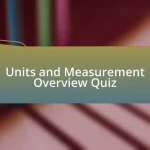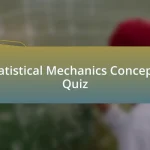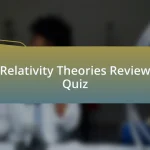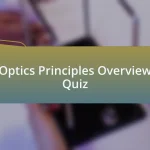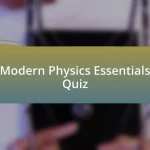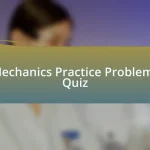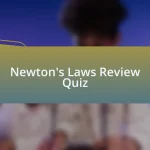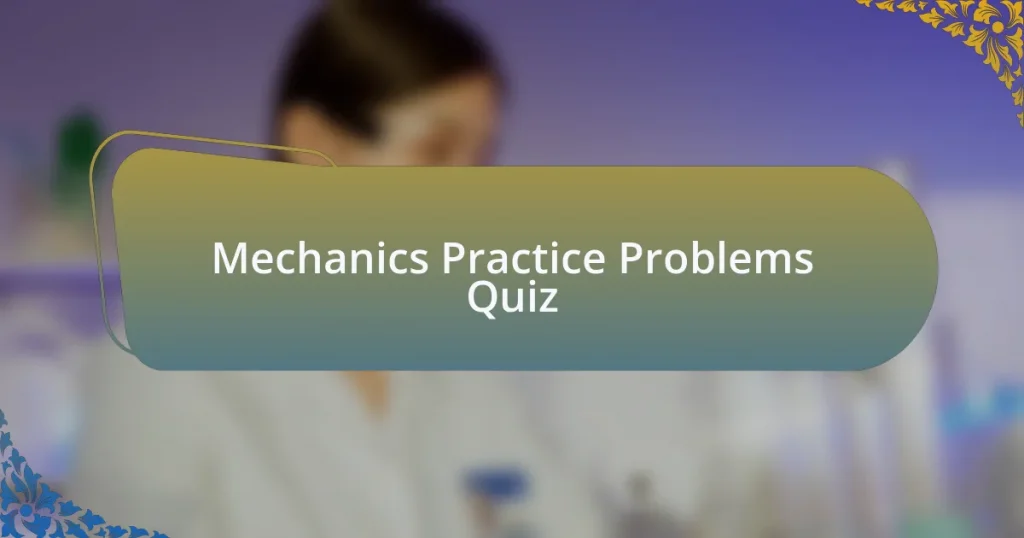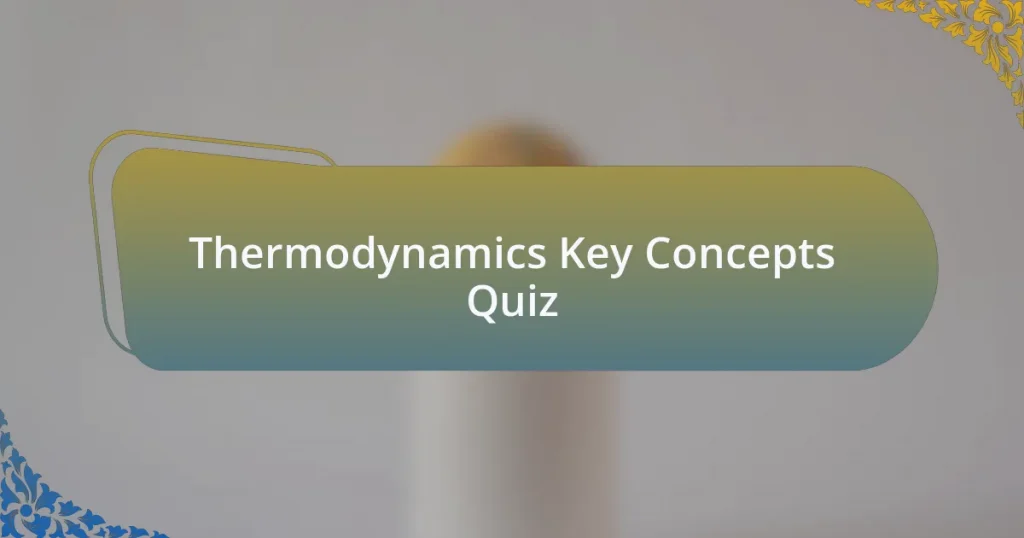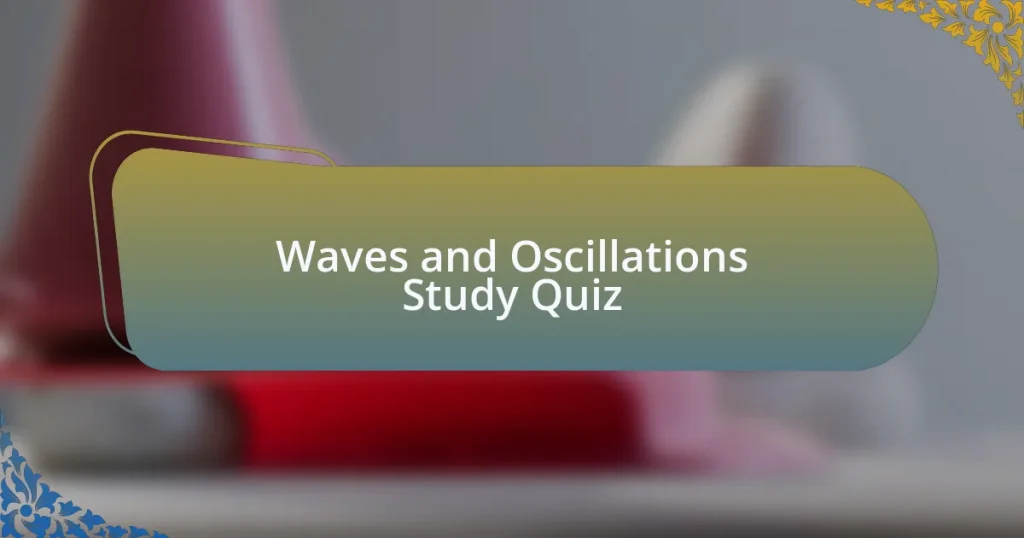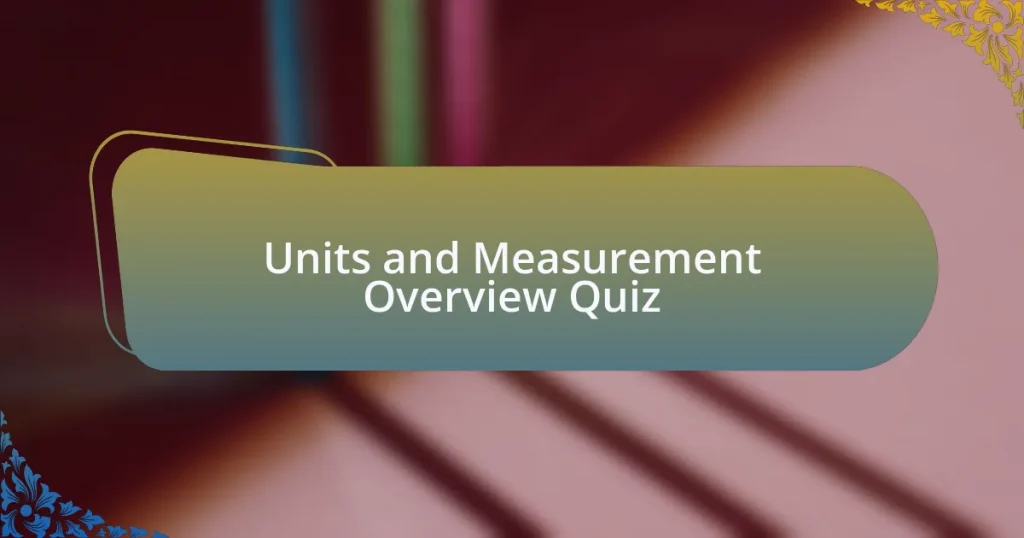Start of Mechanics Practice Problems Quiz
1. Which of the following is not a vector quantity?
- Force
- Velocity
- Acceleration
- Speed
2. An object starts from rest and reaches a velocity after accelerating at a constant rate for four seconds. What is the distance traveled in this time?
- 100 meters
- 64 meters
- 80 meters
- 32 meters
3. At the moment a car is passed by another car constantly traveling at a certain speed, it begins to accelerate. In how many seconds does this car catch up?
- 2 seconds
- 4 seconds
- 6 seconds
- 8 seconds
4. An object moving along a line has a displacement equation. For what value of time is the object stationary?
- Determine the time for the object to return to the starting position.
- Solve for when the velocity equation equals zero.
- Calculate the time when displacement is maximized.
- Find the time when the object reaches maximum speed.
5. An object has a displacement equation. At what value of time is the object not accelerating?
- The object is stationary at a constant position.
- The object has increasing velocity and displacement.
- The object moves back to its initial position.
- The object is accelerating constantly.
6. A projectile is launched from a tube. At what angle should it be launched to maximize distance?
- 45 degrees
- 90 degrees
- 60 degrees
- 30 degrees
7. The velocity of a moving particle is given by a certain function. What is the position after two seconds?
- The position is 20 m after two seconds.
- The position is 0 m after two seconds.
- The position is 10 m after two seconds.
- Use the integration of the velocity function to find the position after two seconds.
8. An object is moving with a constant acceleration of a specific value. What is its velocity after three seconds?
- The object will accelerate to infinite velocity.
- The velocity will be zero after three seconds.
- The velocity will decrease steadily.
- Use the kinematics equation to find the velocity: \( v = a \cdot t \).
9. A car traveling at a constant velocity encounters a hill that causes it to decelerate. How long will it take to stop?
- It will take a specific amount of time based on the initial speed and deceleration.
- It will never stop.
- It will stop after one second.
- It will stop immediately.
10. An object is moving in a circular path. What is the centripetal acceleration of the object?
- The centripetal acceleration is equal to the object`s weight.
- The centripetal acceleration is given by \( a_c = \frac{v^2}{r} \)
- The centripetal acceleration is zero in circular motion.
- The centripetal acceleration increases as the speed decreases.
11. A block slides down a frictionless incline. If it starts from rest, what is its velocity after two seconds?
- 9.8 m/s
- 39.2 m/s
- 0 m/s
- 19.6 m/s
12. An object is moving with a constant acceleration. What is its displacement after four seconds?
- Use the kinematics equation to find the displacement: d = 0.5 * a * t².
- The displacement is equal to the initial velocity times four seconds.
- The displacement will be zero after four seconds.
- The displacement cannot be determined without knowing the mass of the object.
13. A projectile is launched at an angle to the horizontal. What is the maximum height reached?
- The maximum height is calculated using \(\frac{v_0^2}{g}\).
- The maximum height is determined by the range of the projectile.
- The maximum height is given by \(\frac{(v_0 \sin \theta)^2}{2g}\).
- The maximum height is reached at the launch angle of 90 degrees.
14. An object accelerates from rest. What is its velocity after three seconds?
- 15 m/s
- 30 m/s
- 45 m/s
- 60 m/s
15. A car encounters a hill that causes uniform deceleration. How long to a complete stop?
- The time is equal to the initial velocity divided by two.
- You can find the time using the formula for distance alone.
- The time to stop is always one second.
- Use the kinematics equation to find the time: \( t = \frac{v}{a} \)
16. An object in circular motion has a speed. What is its centripetal acceleration?
- The centripetal acceleration is given by \( \frac{v^2}{r} \).
- Centripetal acceleration is zero.
- Centripetal acceleration equals the object`s weight.
- Centripetal acceleration is equal to the object`s speed.
17. A block on an inclined plane starts from rest. What is its velocity after two seconds?
- The velocity is calculated to be 4 m/s, which is incorrect for this scenario.
- The velocity after two seconds is equal to zero since the block is at rest.
- The velocity after two seconds is equal to the block sliding down with a constant speed of 2 m/s.
- The velocity after two seconds is calculated using the kinematics equation: v = g * t, where g is the acceleration due to gravity and t is time.
18. An object accelerates uniformly. What is its displacement after four seconds?
- Use the kinematics equation to find the displacement: 40 m
- Use the kinematics equation to find the displacement: 20 m
- Use the kinematics equation to find the displacement: 80 m
- Use the kinematics equation to find the displacement: 10 m
19. A projectile is launched at an angle with a certain initial velocity. What is its maximum height?
- The maximum height is calculated with \( v_0^2 + gt \).
- The maximum height is equal to \( v_0 \cos \theta \).
- The maximum height is given by \( \frac{(v_0^2 \sin^2 \theta)}{2g} \).
- The maximum height is found using \( \frac{2 v_0 \sin \theta}{g} \).
20. An object has constant acceleration. What is its velocity after three seconds?
- Use the kinematics equation to find the velocity: .
- The velocity is 0 m/s after three seconds.
- The velocity will be constant and unchanged at the start.
- The velocity is equal to the initial distance traveled.
21. A car traveling at a constant velocity decelerates. How long until it stops?
- The time until it stops is determined by the deceleration and the initial velocity.
- The car will stop after one second.
- The car will stop immediately.
- The time until it stops is irrelevant.
22. An object in circular motion has a constant speed. What is the centripetal acceleration?
- The centripetal acceleration is zero because the speed is constant.
- The centripetal acceleration is equal to the tangential speed.
- The centripetal acceleration is directed towards the center of the circular path.
- The centripetal acceleration is equal to the radius of the circle.
23. A block slides down an incline. What is its velocity after two seconds?
- Use the kinematics equation to find the velocity: 19.6 m/s
- 0 m/s
- 29.4 m/s
- 9.8 m/s
24. An object moving with constant acceleration has a displacement after four seconds. What is it?
- Use the kinematics equation to find the displacement: d = (1/2) * a * t^2.
- The displacement is equal to the initial velocity multiplied by time.
- The object moves in a straight line with constant velocity.
- The object`s displacement is zero after four seconds.
25. A projectile is launched at a certain angle. What is its maximum height?
- The maximum height depends only on the mass of the projectile.
- The maximum height is the same as the launch height.
- The maximum height is always zero regardless of the launch angle.
- The maximum height is determined by the initial velocity and launch angle.
26. An object accelerates from rest for three seconds. What is its velocity?
- 15 m/s
- 20 m/s
- 30 m/s
- 10 m/s
27. A car traveling at a given speed stops after encountering a hill. How long does it take?
- It stops instantaneously with no time taken.
- It takes a specific time based on speed and distance.
- It takes infinitely long to stop.
- It takes five seconds regardless of conditions.
28. An object is moving in a circular path. What centripetal acceleration does it have?
- The centripetal acceleration is given by \( \frac{v^2}{r} \).
- The centripetal acceleration is equal to \( \frac{r}{v^2} \).
- The centripetal acceleration is given by \( v \cdot r \).
- The centripetal acceleration is given by \( v + r \).
29. A block is on a frictionless plane starting from rest. Its velocity after two seconds is?
- 10 m/s
- 25 m/s
- 15 m/s
- 20 m/s
30. An object accelerates uniformly from rest. What is its final displacement after four seconds?
- 16 meters
- 64 meters
- 32 meters
- 80 meters
Quiz Successfully Completed!
Congratulations on completing the quiz on Mechanics Practice Problems! This engaging exercise not only tested your understanding of core concepts but also helped reinforce important principles of physics. You’ve likely gained insight into topics such as force, motion, and energy. Each question was designed to challenge your problem-solving skills and deepen your comprehension of mechanics.
Reflecting on the questions you encountered, you may have found new ways to approach problems or discovered gaps in your knowledge to address. This process is vital in physics test preparation. It encourages you to think critically and apply what you’ve learned. Whether you tackled simple equations or complex scenarios, each problem contributed to your growth as a physics student.
As you continue your journey in mastering mechanics, we invite you to explore the next section on this page. Here, you’ll find additional resources and information on Mechanics Practice Problems that can expand your knowledge further. Dive deeper into the subject, and solidify your understanding. Keep up the momentum, and let’s conquer physics together!
Mechanics Practice Problems
Understanding Mechanics in Physics
Mechanics is a branch of physics dealing with the behavior of physical bodies when subjected to forces or displacements. It encompasses concepts like motion, force, mass, and energy. Fundamental laws, such as Newton’s laws of motion, play a crucial role in understanding how objects behave. Grasping these principles is essential for solving mechanics problems effectively on tests.
Types of Mechanics Practice Problems
Mechanics practice problems can be categorized into several types, including kinematics, dynamics, and statics. Kinematics focuses on motion without considering forces, while dynamics relates to the forces causing motions. Statics examines objects at rest and the forces acting on them. Each type requires distinct approaches and formulas, making practice vital for mastering them.
Effective Strategies for Solving Mechanics Problems
To excel in mechanics problems, students should adopt systematic strategies. Start by identifying known and unknown quantities. Draw diagrams to visualize the problem clearly. Apply relevant equations methodically. Check units for consistency and assess whether the final answer makes sense in context. These strategies enhance problem-solving efficiency.
Common Challenges in Mechanics Tests
Students often face challenges such as misinterpreting problem statements or overlooking critical forces. Complex problems may require multiple concepts to be applied simultaneously, leading to confusion. Time constraints also add pressure, affecting performance. Recognizing these challenges allows for focused preparation and targeted practice.
Resources for Mechanics Test Preparation
Various resources are available for mechanics test preparation, including textbooks, online courses, and problem sets. Solutions manuals often provide step-by-step approaches to problems. Educational websites and forums foster community-based learning and provide additional practice problems. Utilizing diverse resources enhances understanding and retention of mechanics concepts.
What are Mechanics Practice Problems?
Mechanics practice problems are exercises designed to test and enhance understanding of the principles of mechanics in physics. They typically involve calculations related to forces, motion, energy, and momentum. These problems can vary in complexity, ranging from basic applications of Newton’s laws to advanced scenarios involving rotational dynamics. They are essential for mastering concepts that are fundamental to physics, particularly for students preparing for physics tests.
How can Mechanics Practice Problems help in Physics Test Preparation?
Mechanics practice problems help in physics test preparation by reinforcing core concepts and building problem-solving skills. Solving these problems enables students to apply theoretical knowledge to real-world scenarios. They also improve critical thinking and analytical skills, which are vital during examinations. Regular practice allows students to familiarize themselves with the format and style of questions that they may encounter in tests.
Where can I find Mechanics Practice Problems for Physics?
Mechanics practice problems can be found in various resources, including physics textbooks, online educational platforms, and academic websites. Many educational institutions provide problem sets as part of their course materials. Additionally, websites such as Khan Academy and various physics forums offer a wealth of practice problems complete with solutions. Online databases and physics simulations also present practical exercises to enhance learning.
When should I start practicing Mechanics Problems for a Physics Test?
You should start practicing mechanics problems at least several weeks prior to a physics test. Early preparation allows ample time to understand concepts and tackle difficult problems. Regular practice over time is more effective than cramming immediately before an exam. This gradual approach strengthens retention and boosts confidence on the test day.
Who benefits from solving Mechanics Practice Problems?
Students at various levels benefit from solving mechanics practice problems. High school students preparing for standardized tests like the SAT or AP Physics exam find these exercises invaluable. College students pursuing degrees in physics, engineering, or related fields also gain significant advantages. Additionally, educators can utilize these problems to reinforce learning among their students, catering to diverse learning styles.


